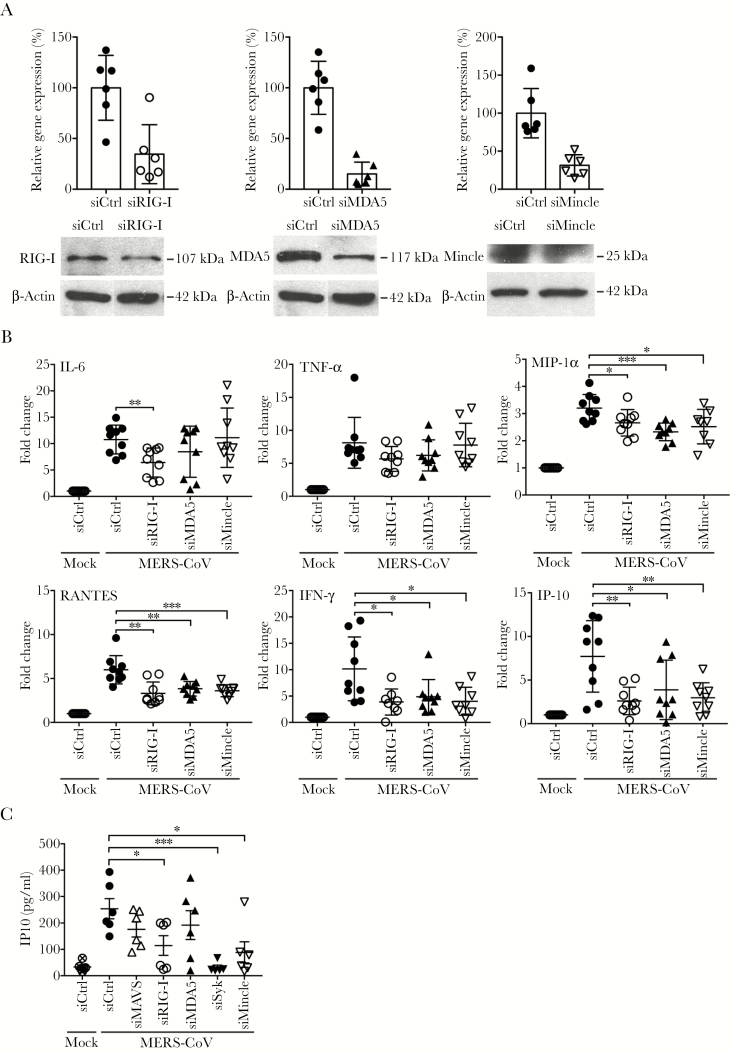Figure 4.
Genetic depletion of retinoic acid-inducible gene (RIG)-I-like receptor (RLR) or C-type lectin receptor (CLR) dampened the induction of proinflammatory cytokines and chemokines. (A) Small interfering ribonucleic acid (siRNA) targeting RLR (RIG-I and melanoma differentiation-associated gene 5 [MDA5]) or macrophage-inducible Ca2+-dependent lectin receptor (Mincle) or scrambled siRNA (siCtrl) were transfected into monocyte-derived macrophages (MDMs) in 2 consecutive days. At day 3 after siRNA transfection, cells were harvested to measure the knockdown effect of receptors by reverse transcription-quantitative polymerase chain reaction assay and Western blotting. (B) At day 3 after siRNA transfection, the depleted cells were infected with Middle East respiratory syndrome coronavirus (MERS-CoV). At 24 hours postinfection (hpi), cells were lysed for detecting messenger RNA expression levels of proinflammatory cytokines and chemokines. Results show the fold change of glyceraldehyde 3-phosphate dehydrogenase-normalized expression level in the infected cells relative to that in the mock-infected cells. Data are presented as mean ± standard deviation of triplicate wells of MDM from 3 different donors. (C) At day 3 after the siRNA transfection, the depleted cells were infected with MERS-CoV. At 24 hpi, cell-free media were harvested for detection of IP-10 secretion by enzyme-linked immunosorbent assay. Unpaired t test was used for data analysis. *, P < .05; **, P < .01; ***, P < .001.

